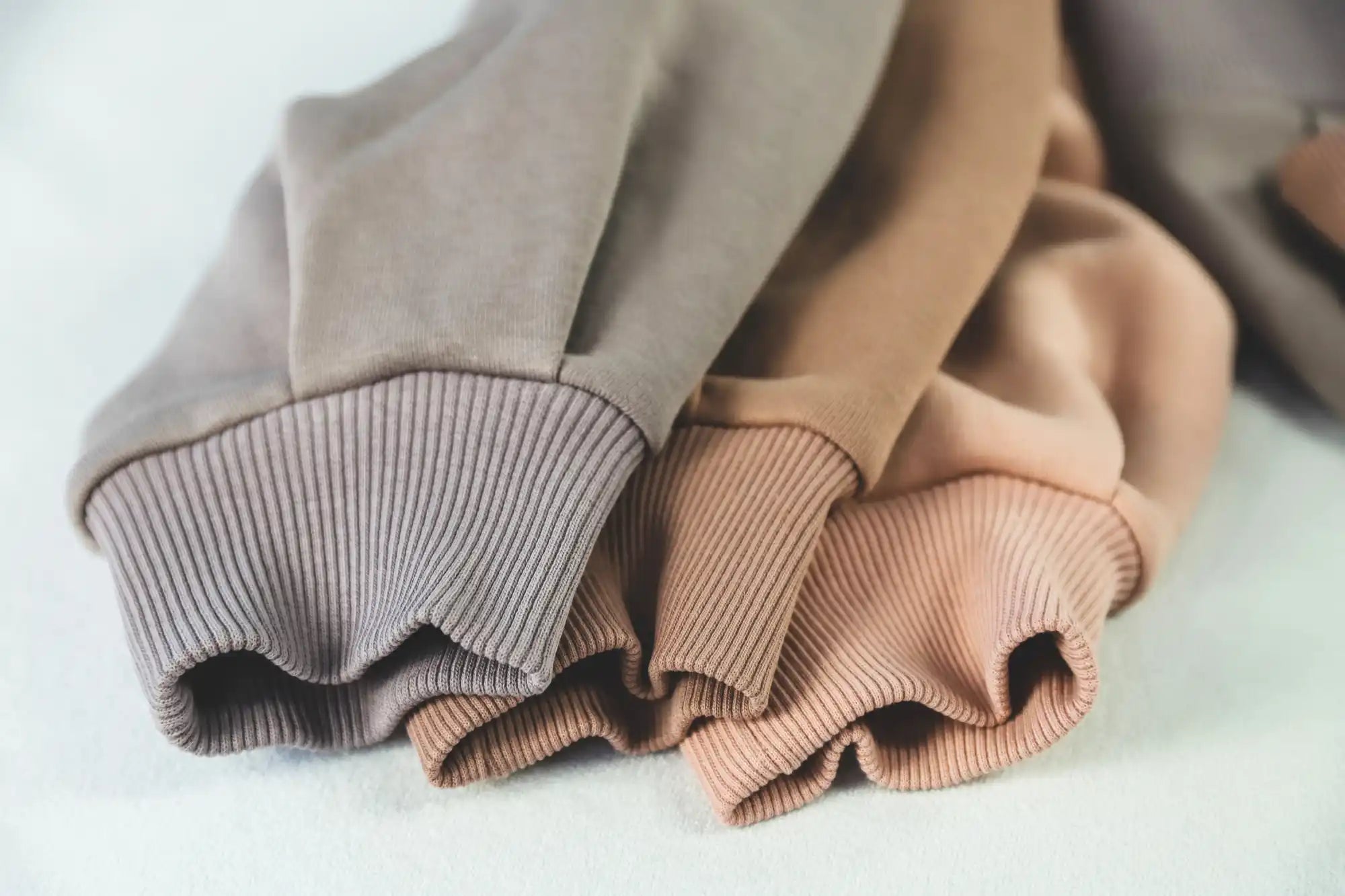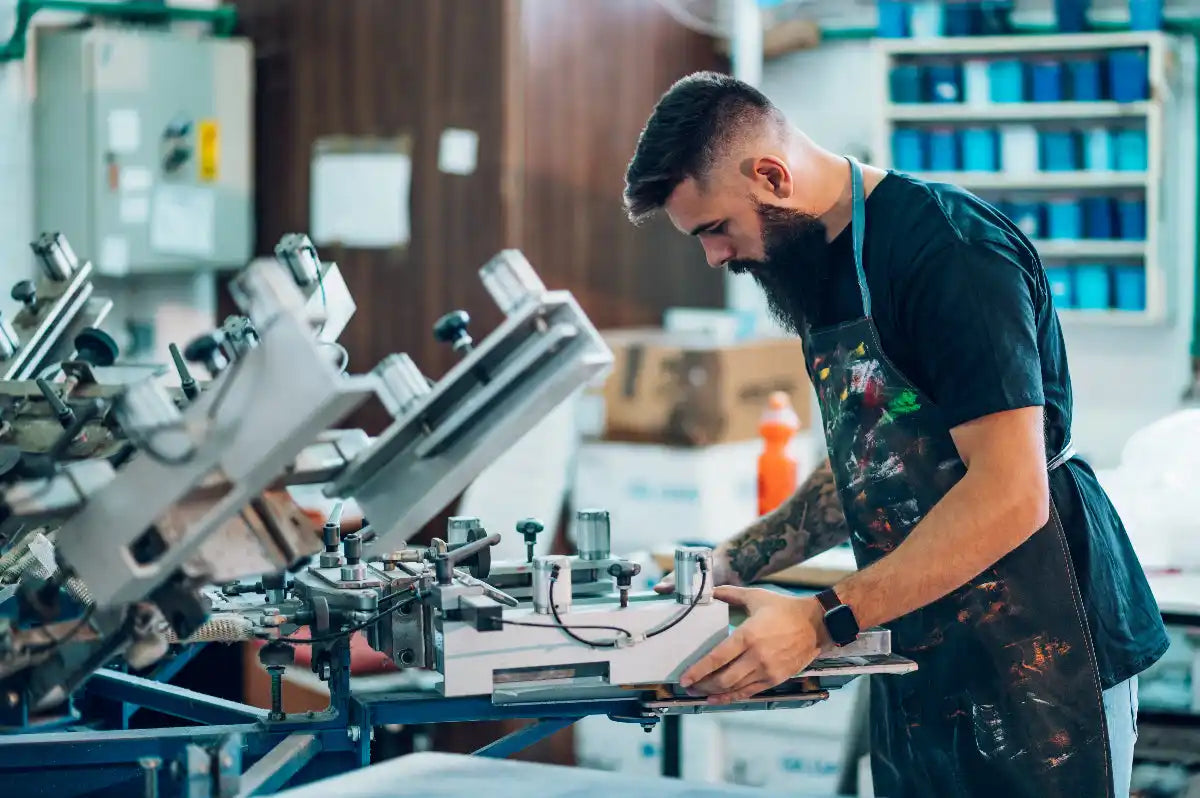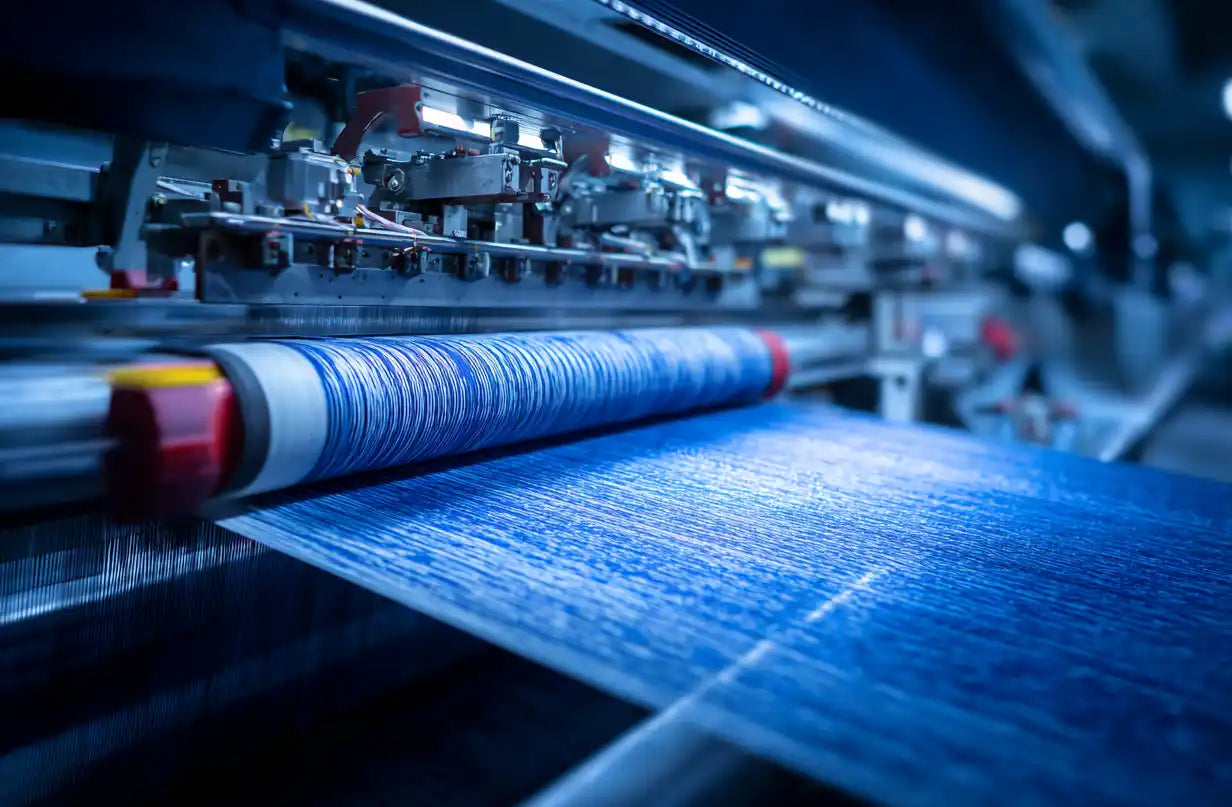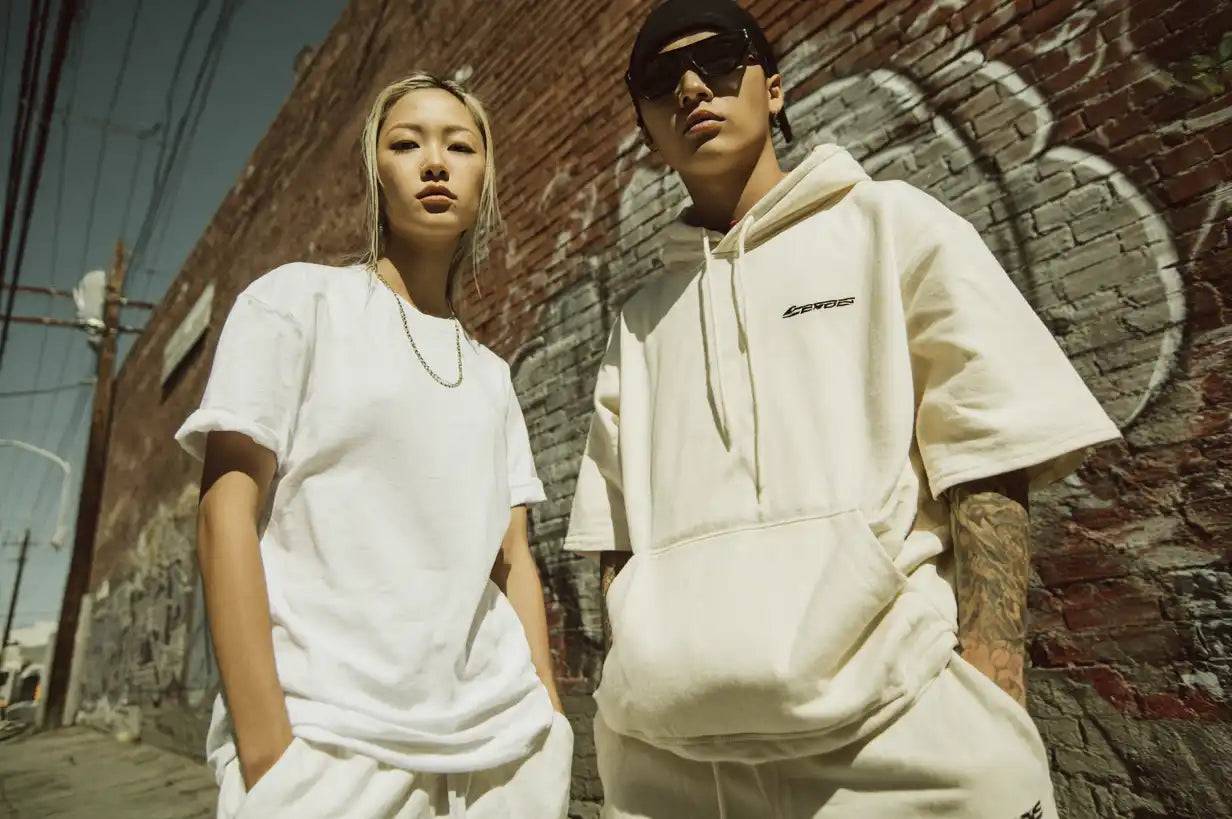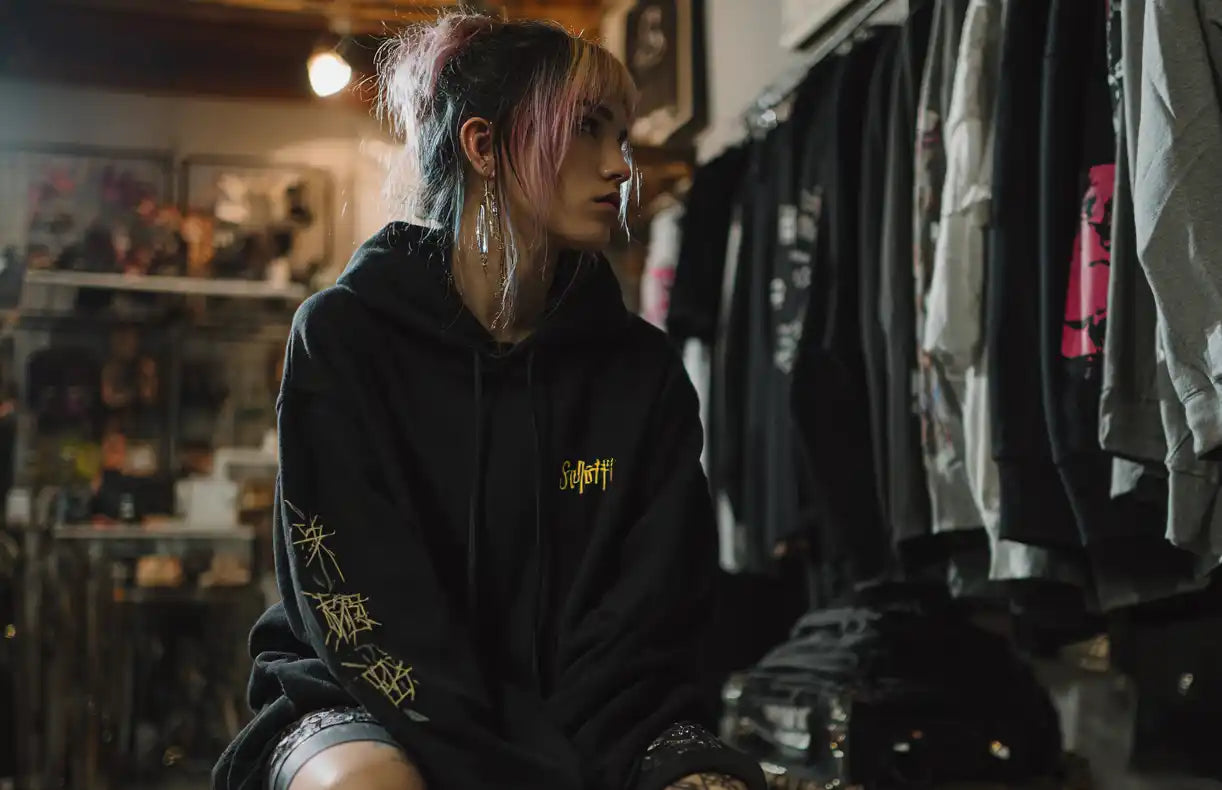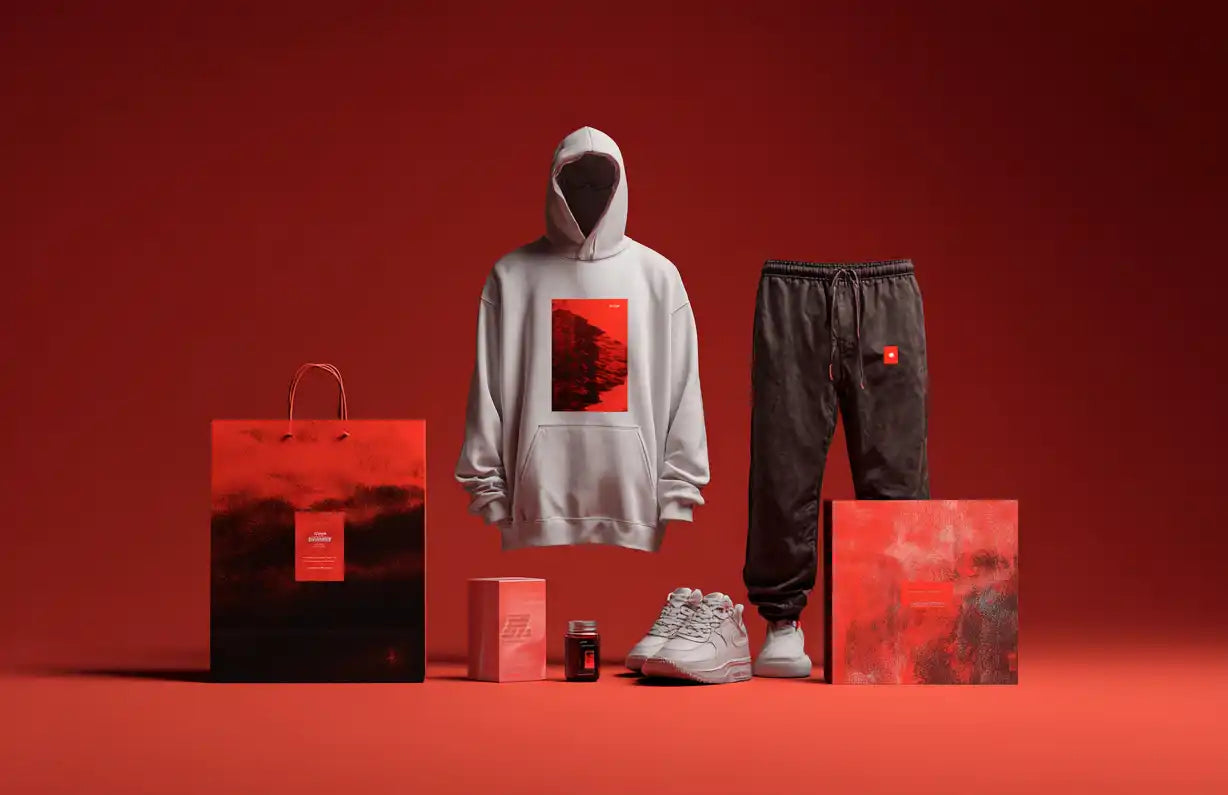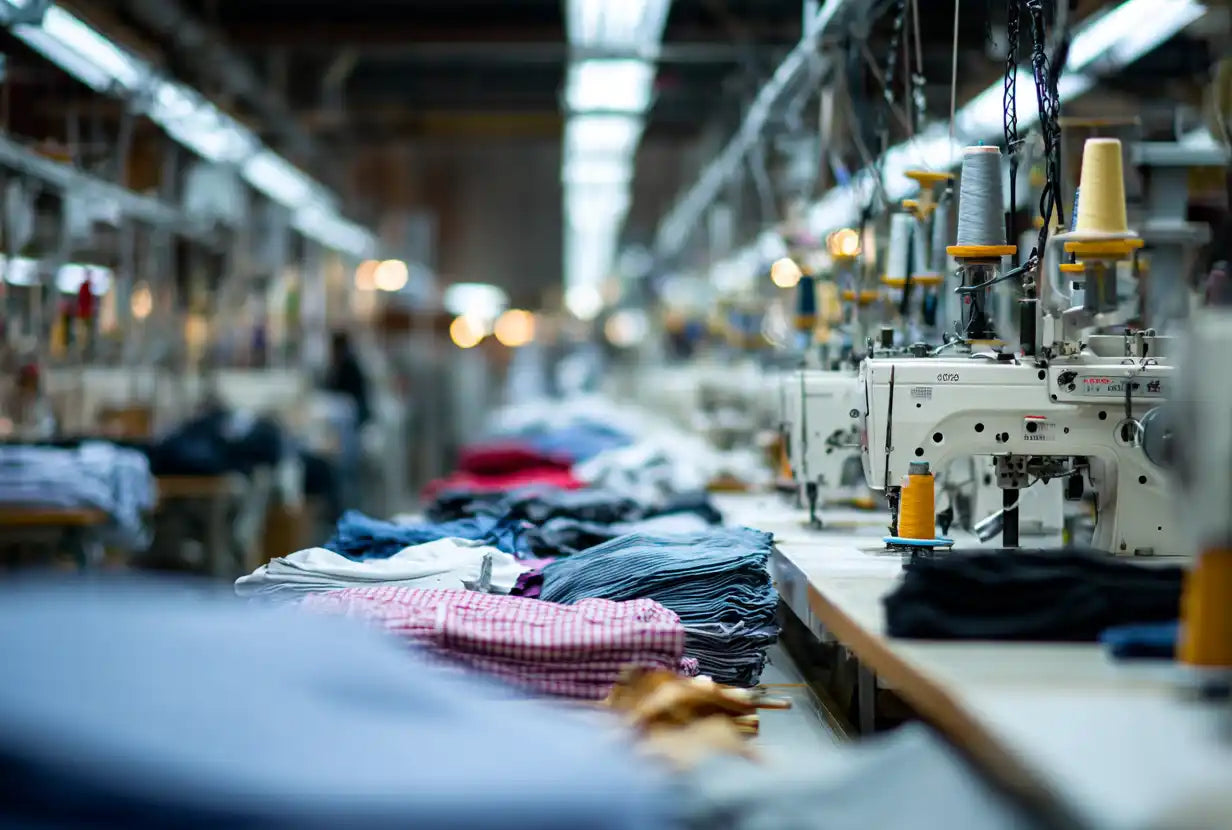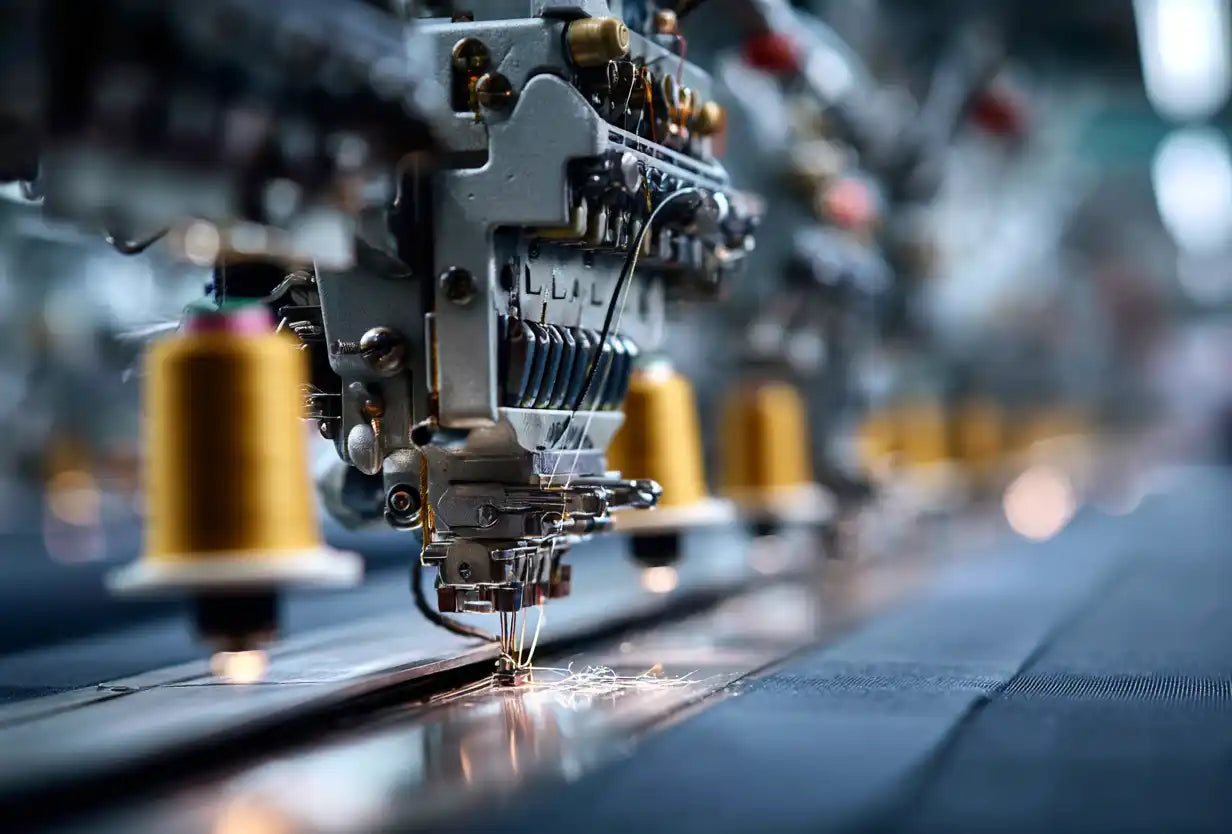What is a vintage/washed t-shirt?
A vintage or washed t-shirt is a garment processed to achieve an aged, worn-in appearance and an ultra-soft hand. Rather than the flat, uniform color of mass-produced blanks, vintage/washed tees display subtle tonal variation and a lived-in texture that reads as authentic and premium. This is achieved through post-construction dyeing and targeted wash treatments that change both color and feel.
Techniques differ — garment dyeing creates rich, saturated tones; enzyme washing produces a soft, gentle finish with superior eco credentials; acid and stone washes create retro fades and texture. Choosing the right technique depends on brand voice, fabric, and sustainability commitments.

Why demand for vintage/washed tees is rising
In 2025 the vintage-washed category grew sharply because shoppers and founders want garments that communicate history and quality. The three drivers are:
Sustainability: Consumers increasingly favor organic and traceable fibers paired with low-impact washes. European producers, particularly Portugal, offer certified workflows (GOTS, OEKO-TEX) and closed-loop water systems that align with brand commitments.
Authenticity: Retro-core aesthetics and "quiet streetwear" are fueling demand for naturally faded palettes and tactile fabrics.
Customization: Startups and direct-to-consumer labels want small-batch options and unique colorways. Being able to order 100–300 units in a specific vintage wash shortens go-to-market cycles while protecting margins.
For practical case studies and guidance on sourcing, see our guides on low MOQ manufacturing in Portugal and the definitive guide to low-MOQ production.
Portugal’s manufacturing advantage for vintage/washed tees
Portugal combines decades of textile finishing experience with modern sustainability practices. Key operational advantages include:
Lower MOQs: Typical manufacturing minimums in Portugal for garment-dyed, washed tees are often 100–300 units — ideal for emerging brands. (Compare to higher MOQs in many Asian supply chains.)
Shorter lead times and EU shipping: Typical production lead time is 4–6 weeks, with fast EU transit that supports rapid restock and agile collections. For connected reading about Portugal’s production timelines and quality standards, see Clothing Manufacturers Portugal: Your Complete 2025 Guide.
Certified finishes: Many Portuguese plants offer GOTS, OEKO-TEX, and closed-loop water treatment, which helps brands claim traceability and reduced environmental impact.
Materials & fabric choices that work best
Fabric selection is the single most important decision when launching a vintage-washed tee.
Cotton type: Combed and ring-spun organic cotton produce a soft hand and reliable dimensional stability. Recycled cotton blends can reduce footprint but require careful finishing to maintain color depth after wash.
GSM (fabric weight): For vintage tees, 180–220gsm balances body and drape — it's substantial enough to show the wash and remain durable, while staying comfortable across seasons.
Knit structure: Single jersey and slub knits are common; a subtle slub texture enhances the aged look after washing.
If you want a deeper primer on fabric choices for new brands, our article How to choose the right Fabrics for a new Clothing Line explains tradeoffs by GSM, knit, and fiber origin.
Practical manufacturing workflow: concept → production
The standard workflow for launching a vintage-washed tee includes:
1. Tech pack & sample planning: A clear tech pack, approved color swatches, and wash references reduce rework. Use a tech pack template like the one in our Clothing Tech Pack Guide.
2. Fabric procurement: Order mill-quality yardage or blanks; if you buy blanks, verify bleach- and dye-compatibility for your chosen wash.
3. Sample and wash lab: Approve a lab-dip or sample wash to confirm tonal outcomes and hand feel. Vintage washes vary across batches — establish acceptable variance ranges with your factory.
4. Full production and QC: Implement multi-stage QC focusing on dye consistency, seam integrity, and finishing hand. Our Understanding Premium Blank Quality article outlines sample QC checklists.
Wash & dye techniques — and when to use them
Choose a wash technique based on aesthetic goals and sustainability preferences:
Garment dye: Dye after construction for deep, uniform shades with a soft hand. It’s a premium choice for tonal vintage looks.
Enzyme wash: Uses enzymes to break down fibers subtly, producing a silky softness. High eco potential when paired with responsible effluent management.
Acid wash & stone wash: Produce high-variation, textured vintage effects — great for retro lines but can be more resource-intensive. Consider targeted applications (accents rather than whole-production runs) to save cost and impact.
For technical finishing tips and white-label finishing options, read Dyeing, Finishing & White Label Success.
Customization & branding options
Vintage-washed tees pair well with subtle branding elements that preserve the aged look:
Soft prints & pigment inks: Pigment inks sit on the surface and integrate more seamlessly with faded backgrounds; they feel more vintage than thick plastisol prints.
Embroidery & woven labels: Use minimal embroidery or woven labels for a premium cue — avoid heavy rubber logos that clash with the soft aesthetic.
Special finishes: Silicone prints, puff prints, and small appliqués are available, but test for washability — some add-ons may change how the garment ages.
For guidance on designing custom garments and finishes that stay true to the vintage aesthetic, see How to Design Custom Hoodies (and Apply the Same Principles to Tees).
Cost, MOQ and logistics: realistic expectations
Quick facts to plan budgets and timelines:
Average cost per unit (Portugal): €7–€12 depending on fabric and wash complexity. Typical MOQs for washed, garment-dyed tees: 100–300 units. Production lead time: 4–6 weeks for samples + production. EU shipping: typically 1–2 business days for finished goods if shipped from Portugal.
These figures make Portugal especially appealing to startups — you get premium finishing with realistic budgets and manageable MOQs. If you need a buyer’s checklist, our tech-pack checklist is a practical next step.
Quality control and tolerances for vintage finishes
Vintage washes are inherently variable — that’s part of the design. But brands must set clear tolerances to avoid customer confusion:
Define acceptable color variance in lab-dips and photos, require triple-inspection during production, and spot-check for seam strength and shrinkage. When listing product pages, explain to customers that natural variation is intentional and provide close-up photos to set expectations.
Selling & marketing vintage-washed tees
Use the garment’s story as a marketing asset. Key messages that work:
Process transparency: Describe the fabric origin, wash method, and eco measures (e.g., closed-loop water treatment) — consumers reward traceability.
Limited runs: Sell small-batch drops to create scarcity and justify higher price points. Clearly label wash type (enzyme, garment-dye, acid) on product pages.
Styling content: Show how the tee layers with hoodies and jackets; link to complementary products such as your premium oversized hoodies and t-shirt collection.
Frequently Asked Questions
Manufacturing in Portugal
1. What are realistic MOQs for vintage/washed t-shirts made in Portugal?
Portugal manufacturers commonly accept MOQs of 100–300 units for garment-dyed and washed t-shirts. These lower MOQs make Portugal ideal for startups and small labels that need controlled inventory without sacrificing finishing quality. If you require customization like custom labels or woven tags, discuss MOQs early as some add-ons may slightly raise minimums.
2. How long does production take for a washed t-shirt order from a Portuguese factory?
Lead times typically run 4–6 weeks from sample approval to finished goods, depending on fabric sourcing and wash complexity. Samples and lab-dips add time up front, so plan at least 6–8 weeks before a launch if you need time for photography and marketing. Shipping inside the EU is fast, often 1–2 days for standard carriers.
3. Are Portuguese factories certified for eco-friendly washing processes?
Many Portuguese factories hold GOTS, OEKO-TEX, and ISO certifications and operate closed-loop water systems. Ask your supplier for certification records and details about waste water treatment, dye types, and chemical safety to support marketing claims.
4. Where can I read case studies or factory profiles in Portugal?
See our industry resources like Clothing Manufacturers Portugal: Your Complete 2025 Guide and articles on low-MOQ manufacturing for practical examples and partner recommendations.
Fabrics & Materials
5. Which fabric weight is best for a vintage/washed t-shirt?
180–220 GSM is the sweet spot for a vintage tee. It gives enough body to hold shape and shows washes well, while remaining comfortable. Lighter weights (below 160 GSM) can feel too thin after heavy washes; heavier weights (above 240 GSM) risk being too stiff for casual vintage looks.
6. Should I use organic cotton or recycled blends for vintage washes?
Organic ring-spun cotton is recommended for the best hand feel and predictable wash results. Recycled blends reduce footprint but can introduce color absorption differences — test thoroughly. Prioritize mills with traceability and fiber certificates so you can claim authenticity on product pages.
7. How do wash techniques affect fabric durability?
Enzyme and garment-dye washes are gentle when properly controlled and maintain fabric integrity. Acid and stone washes can be more aggressive — they create stronger texture but require stronger fabrics and careful QC to avoid excessive weakening.
8. What finishes help preserve the vintage look while improving durability?
Soft enzyme finishes and silicon-based softeners enhance hand feel and protect against wear. Pre-shrinking and controlled heat-setting preserve fit after washing. Communicate care instructions clearly to customers to extend garment life.
Customization & Private Label
9. What branding options work best on a vintage-washed tee?
Subtle pigment prints, small embroidery, woven neck labels, and recycled-paper hangtags pair best with vintage aesthetics. Avoid thick, shiny prints that disrupt the soft look. Place branding thoughtfully to maintain the garment's character.
10. Can I order multiple washes and colorways in a single small-batch run?
Yes — Portuguese manufacturers frequently support multi-color small batches, though each wash or color may add setup costs. Plan collections intentionally and prioritize the most promising colorways to stay within budget.
11. Do small-batch washing processes increase unit cost much?
Small-batch garment dyeing and washes can raise per-unit cost but provide greater control, brand differentiation, and lower inventory risk. For many DTC brands, the marketing and margin benefits offset the incremental cost.
12. How should I brief a factory for a “vintage” result?
Provide reference photos, fabric and color swatches, and a clear tolerance range for variation. Request a sample wash and sign off on lab-dips. Include desired hand feel (soft, slightly worn, silky) and acceptable color shift percentages so QA can assess production batches consistently.
Related reading & internal resources
Linking internally strengthens topical authority. Recommended pages to link to from product or collection templates include:
- Premium Blank T-Shirts — 2025 Trends
- Acid Wash Shirts — Vintage Revival
- Definitive Guide to Low MOQ Manufacturing
(These are examples already present in your sitemap and add relevance when linked from product pages, collection descriptions, and the clothing resource hub.)
Conclusion: Why a vintage-washed tee should be in your collection
Vintage/washed t-shirts offer brands a unique convergence of style, storytelling, and sustainability. They allow for creative expression through wash techniques and colorways while enabling small-batch production that minimizes inventory risk. Portugal remains a top choice for brands seeking premium finishes, certified processes, and pragmatic MOQs.
If you’re launching a private label or expanding a seasonal line, start with a 2–3 colorway test run in a 180–220gsm organic ring-spun cotton, review sample washes carefully, and partner with a manufacturer that provides effluent treatment and traceability. For hands-on guidance, explore our low-MOQ manufacturing guide and the dyeing & finishing playbook.

